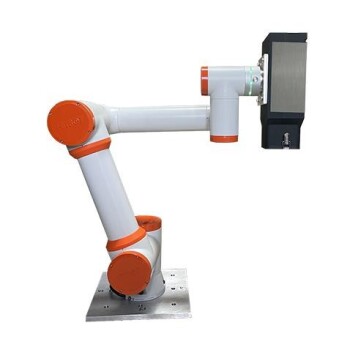When it comes to elemental analysis, both portable XRF analyzers and lab XRF analyzers use X-ray fluorescence (XRF) technology. However, they differ significantly in terms of portability, application scope, and analytical capabilities. Understanding these differences is crucial for lab equipment purchasers to make informed decisions based on their specific needs and constraints.
5 Key Points to Consider When Choosing Between Lab XRF and Portable XRF

1. Portability and Accessibility
Portable XRF Analyzers:
- Designed to be lightweight, handheld, and battery-powered.
- Allows for on-site analysis in various environments, including remote or harsh conditions.
- Ideal for real-time decision-making in fields like mining, manufacturing, and archaeology.
Lab XRF Analyzers:
- Typically larger, bulkier, and require controlled laboratory environments.
- Limited to lab settings, making them less suitable for fieldwork.
2. Analytical Capabilities and Precision
Portable XRF Analyzers:
- Offer real-time, non-destructive analysis but with lower detection limits compared to lab XRF.
- Produce elemental data, which can be converted to oxide data if the phases are well understood.
- Suitable for quick assessments and preliminary analysis.
Lab XRF Analyzers:
- Provide higher precision and lower detection limits.
- Capable of analyzing a wider range of elements and compounds.
- Ideal for detailed, confirmatory analysis and research purposes.
3. Ease of Use and Training Requirements
Portable XRF Analyzers:
- Designed for simplicity, with an intuitive interface and easy menu navigation.
- Can be operated by minimally trained users, making them accessible for various professionals.
Lab XRF Analyzers:
- Require more extensive training and technical expertise to operate effectively.
- Often involve more complex procedures and data interpretation.
4. Applications and Use Cases
Portable XRF Analyzers:
- Widely used in exploration, grade control, and quality assurance in industries like mining and manufacturing.
- Effective for on-the-spot analysis in environmental monitoring and archeology.
Lab XRF Analyzers:
- Employed in detailed material characterization, research, and development.
- Used for statutory reporting and high-precision analysis in regulated industries.
5. Safety and Regulatory Considerations
Portable XRF Analyzers:
- Require adherence to radiation safety procedures but are considered very safe if used properly.
- Data generated may not be suitable for all regulatory reporting but is effective for exploration results and grade control.
Lab XRF Analyzers:
- Typically have more stringent safety protocols and are better suited for regulatory compliance.
- Produce data that can be used for resource estimation calculations under various statutory reporting codes.
6. Mobility and Autonomy
Portable XRF Analyzers:
- Provide mobility and autonomy, allowing analysis at any convenient time and location.
- Enable quick decision-making without being tied to a specific location.
Lab XRF Analyzers:
- Stationary and require a dedicated lab setup, limiting their flexibility and responsiveness.
In summary, while both portable and lab XRF analyzers utilize XRF technology for elemental analysis, they serve different purposes and operational contexts. Portable XRF analyzers are ideal for on-site, real-time analysis in various fields, offering convenience and ease of use. In contrast, lab XRF analyzers provide higher precision and are better suited for detailed, confirmatory analysis and regulatory compliance. Lab equipment purchasers should consider these factors to select the most appropriate tool for their specific analytical needs and operational environment.
Continue Exploring, Consult Our Experts
Discover the perfect analytical tool for your lab's needs with KINTEK SOLUTION's comprehensive range of XRF analyzers. Whether you require the mobility of portable options or the precision of lab-based systems, our expertise ensures you get the best fit for your application. Ready to elevate your analysis capabilities? Contact us today to explore our solutions tailored to your unique requirements. Your next scientific breakthrough awaits!









